Houston Artist’s “Ebony Love Letter” Shows Why Black History Needs to be American History
Wyntress X’ion Reflects On Love and Culture
BY Caitlin Hsu // 01.13.23HCCAC Artist in Residence Wyntress X'ion (Photo by TyeVisuals Photography)
Houston artist Wyntress X’ion is presenting her first art show “Ebony Love Letter” at the Harris County Cultural Arts Council. Eight months in the making, this immersive exhibition consists of 20 contemporary and abstract works created by X’ion in a variety of mediums. From acrylics and oil pastels to paper mache and collage. The show runs through February 14th.
X’ion wants to not only tell the stories of Black and Brown communities in America and around the world, but also depict a love letter to Black culture and show, ultimately, that Black history is American history.
Wyntress X’ion has come a long way, from scribbling in coloring books in her grandmother’s living room as a child in South Houston to now, becoming the first HCCAC Artist in Residence to host a show at the venue. In light of the exhibition’s grand opening, I sat down with Wyntress X’ion to discuss her inspiration and influences.
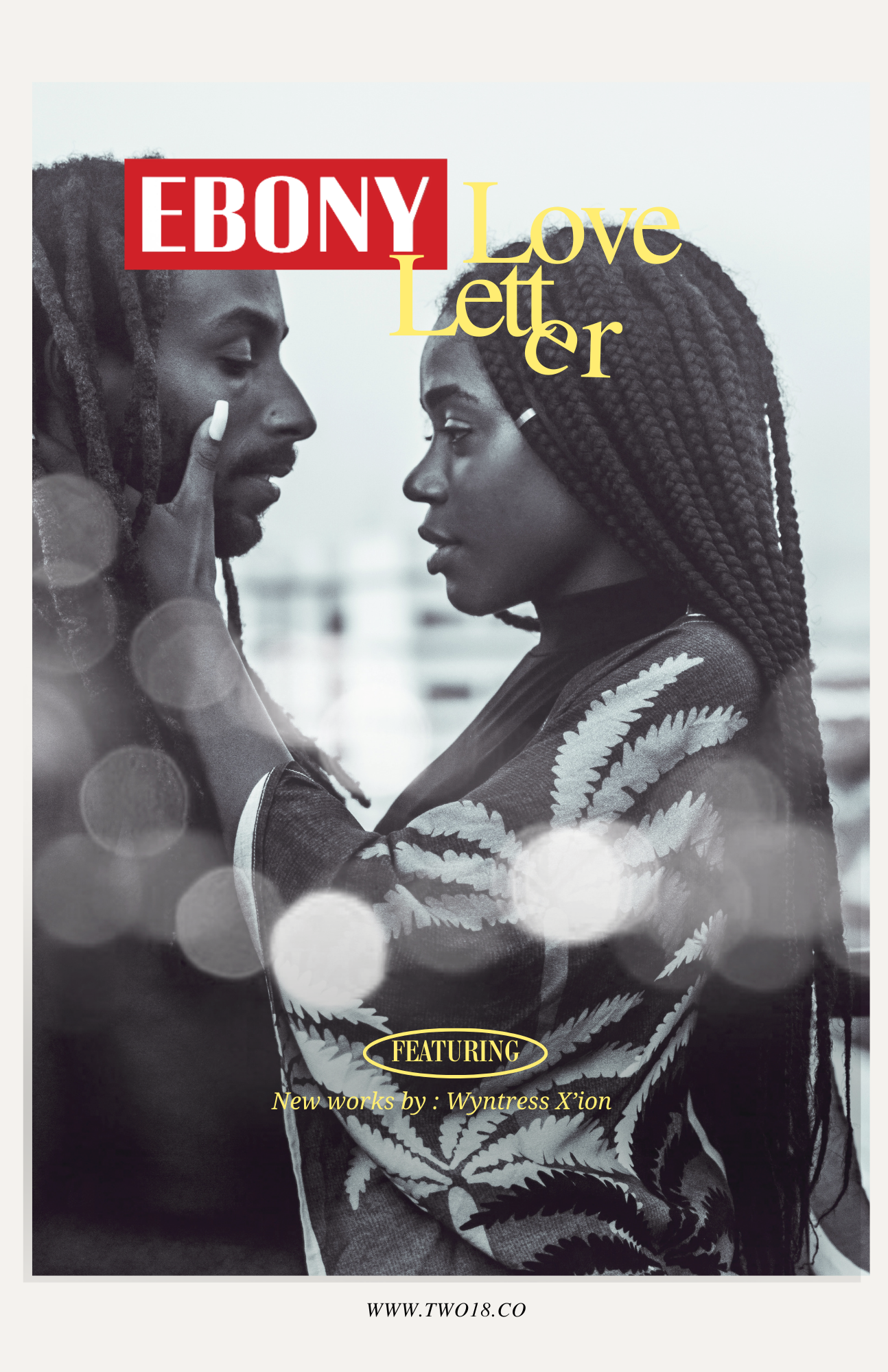
PaperCity: What was your inspiration for “Ebony Love Letter?”
Wyntress X’ion: My inspiration is my love for culture. I wanted to put together the project to depict various ways that I show appreciation for culture.
Black people, we have this synonymous language with love, and I was just trying to take my version, my representation and put it on canvas. I wanted people to feel seen. I wanted them to feel valued. I wanted them to feel heard. I wanted them to feel like art. And I didn’t know any other way to process that or to show that other than using all these very vibrant colors, and all these different mediums, and display that as a portrait.
I really wanted to take all of those things that I’ve always thought throughout my entire life and put it on canvas. When you go to the exhibition, you’ll find a lot of cultural nuances from beginning to end, from songs, phrases, or images that are familiar from childhood. The exhibition gives you a timeline of where we came from, to where we are presently.
There are cultural influences like Muhammad Ali, Basquiat, Sade, Billie Holiday, Harriet Tubman. So you get a little history lesson also about how some of those people who fought for social justice, they’re still pretty prevalent today.
PC: Are those artists that you feel you are heavily influenced by?
WX: Yes, in different ways. Jean-Michel Basquiat is absolutely an influence. When people reference my work, a lot of the time that name is one of the most probably popular names that I hear often, just because some of my style is similar to his. Billie Holiday and Sade or Muhammad Ali, those are also artists that influenced me.
Of course, they’re not visual artists, but the things that they taught, the things they stood for, and the work that they left here absolutely influenced not only who I am as a person, but also my work.
PC: How do you evoke those influences in your visual art?
WX: I have a piece titled Hueman Being in the exhibition. It is an abstract piece, with images of Muhammad Ali, Basquiat and Joe Louis — and words and phrases from all three of them. It’s a timeline to show that Black men are still fighting for social justice, they’re still fighting for freedom, they’re still fighting to be seen, they’re still fighting to show that they are part of American history and culture.
And that piece shows how “Ebony Love Letter” itself is not only a love letter to Black and Brown people or Indigenous people. It is absolutely a love letter to show that Black history is American culture. There’s not a part of our history that you can erase, or you cannot tie into America. And so that piece, specifically when you look at when Muhammad Ali said, “I am America, I am the part you won’t recognize,” it speaks to me.
I wanted to play off of sensory overload. There’s a lot to look at. I wanted to be intentional about the smell of the room, the sounds that you heard, how I lay every piece from the beginning to end, different little attributes that are added in the exhibition.
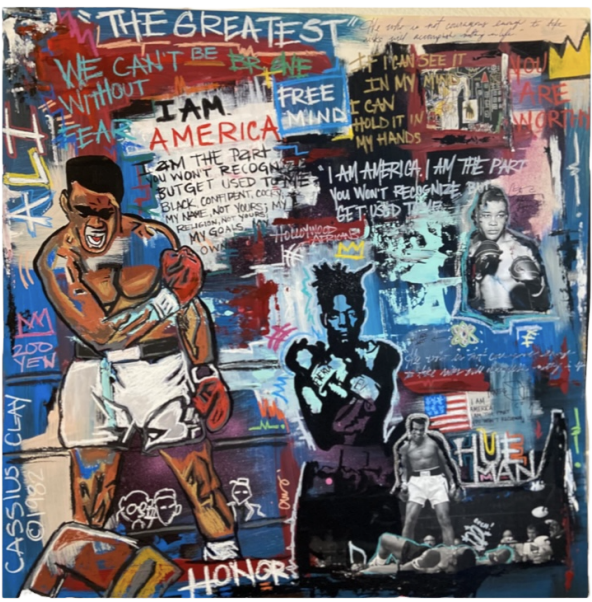
PC: You mentioned that you laid out the exhibition very intentionally. Can you tell me more about specific works and your intentions?
WX: On Harriet’s Flag, I added a rope hanging from end to end with the canvas dropping from it like a flag. I was trying to convey her message of “I’m not anybody’s property.” That’s why the rope is broken. I didn’t want it to represent necessarily a broken noose, but I know that people will associate it with that because of the timeframe.
I call it Harriet’s Flag because that was her owning our rights and our people. It’s a very intentional homage to Harriet Tubman and the many people that she freed, and her contribution to American history.
There’s a little boy who’s maybe no more than the five that I painted, and it’s called Someday We’ll All Be Free. And when you look in his eyes, he looks like he’s worried. But he’s right next to a little girl who’s sitting there, and she’s probably around the same age. She’s just looking in the air, and you can see the hope in her face. The reason why I have both of those there is because Black children that are born in America, a lot of us are born into poverty, a lot of us are born into less than fortunate circumstances. And those two children are born with two different backgrounds.
The storyline is you’re beautiful, you are seen just as you are. There’s different stories and different options and different narratives, if you just open your eyes a little bit, given different chances.
You come out of that room and then you’re into what I feel like is a lighter feeling in the exhibition. There’s a sonnet playing titled Ebony Love Letter, which kind of plays off of every piece that’s in that room. We have a diffuser in there with lavender and frankincense. So it calms you, whether or not you’re aware of it.
And then you go out into the hallway, which is more so curated for a newer generation. You’ll see very unique portraits of couples together and Black women in that hallway, very vibrant with a lot of texture, and they look like modern people. A generation today, painted on canvas. I wanted people to come in and feel and see themselves in the work.
I have a piece called Come Home that is a guy and a girl where she’s embracing his face, and that was just to speak to how when you are in a romantic partnership, sometimes home is a person. Next to that is We Are One, which is a play on words because it’s the title of a Frankie Beverly and Maze song.
I put the woman’s and the man’s faces together. She’s looking one way, and he’s looking forward, but their faces are one. I was very intentional with titles and how I placed the pieces, which allows you to get the story of not only the progression in my work, but the progression of us as a culture.
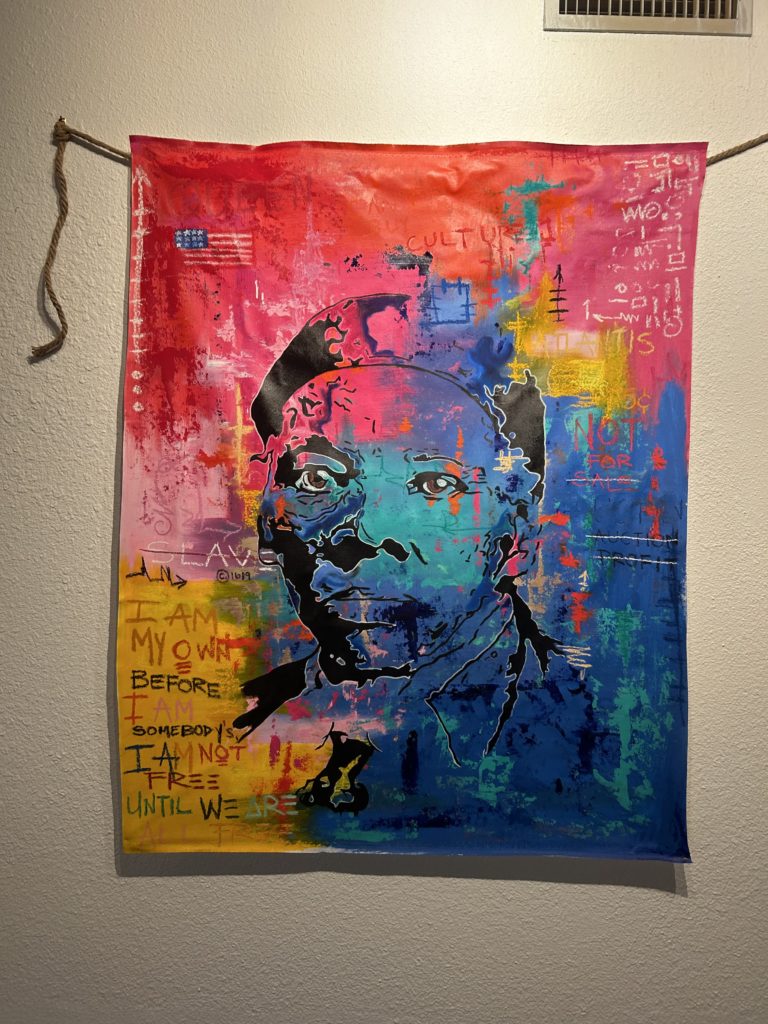
PC: Was there any particular feedback that really resonated with you?
WX: The tears. That night I heard so many different things, but the feedback that touched me the most was the fact there wasn’t a dry eye in the space. This body of work and all the things that I’m telling you that I really spent eight months creating, I felt like on that night, I accomplished that.
People were telling me “I appreciate you sharing this, I appreciate you being so transparent. I appreciate you being so vulnerable. Thank you for creating this. For including me. Thank you for including us.” I’m really, really proud of it.
PC: Any parting thoughts?
WX: I say that “Ebony Love Letter” is a love letter to Black folk, but I truly, truly think that it is also just a love letter to people. It is an educational, inspirational experience, and I absolutely believe that everybody should just just come by. My ultimate goal is for you to take something from the work, whether it be a truth, a lie, or just some inspiration. Take something from it.
“Ebony Love Letter” will be on display until February 14 at Harris County Cultural Arts Council at 13334 Wallisville Road. Admission is free. Learn more about HCCAC here.
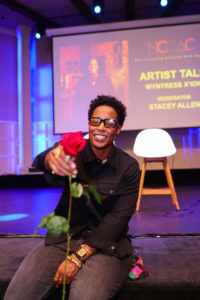

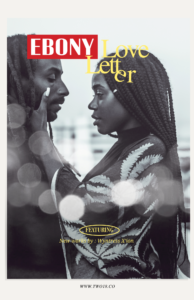
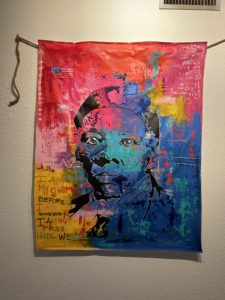

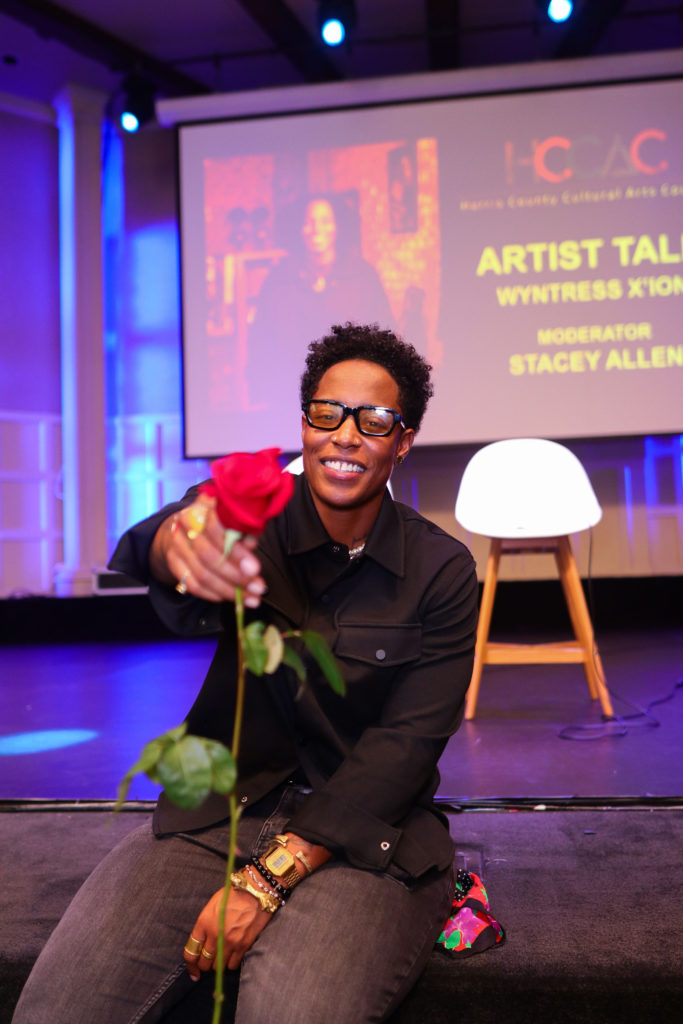
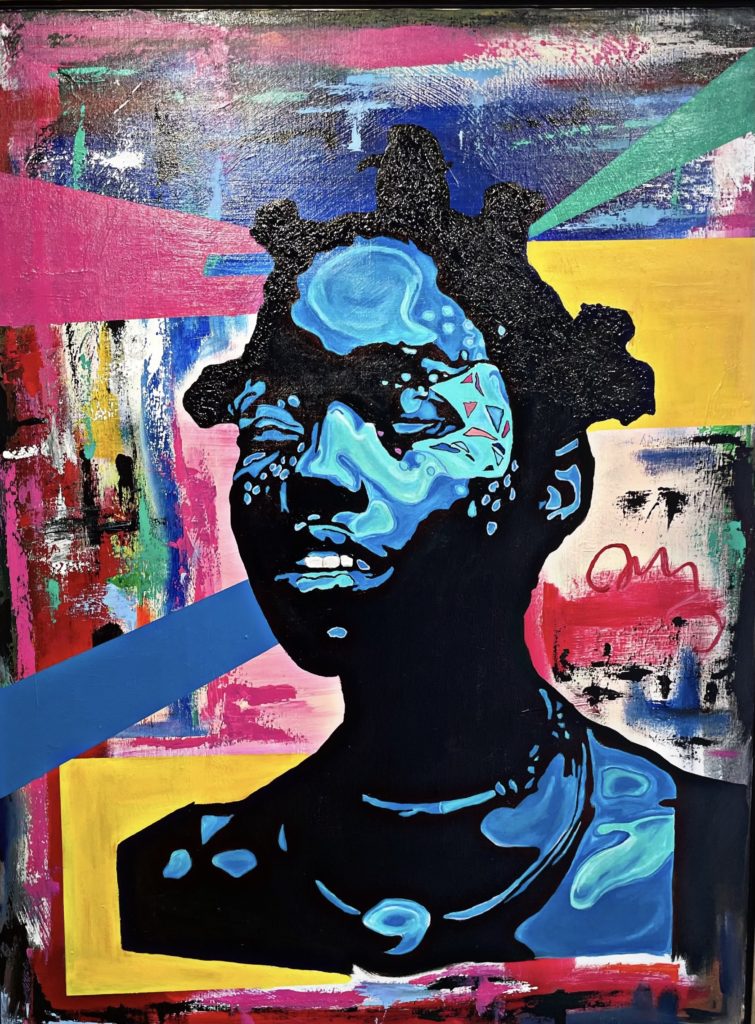
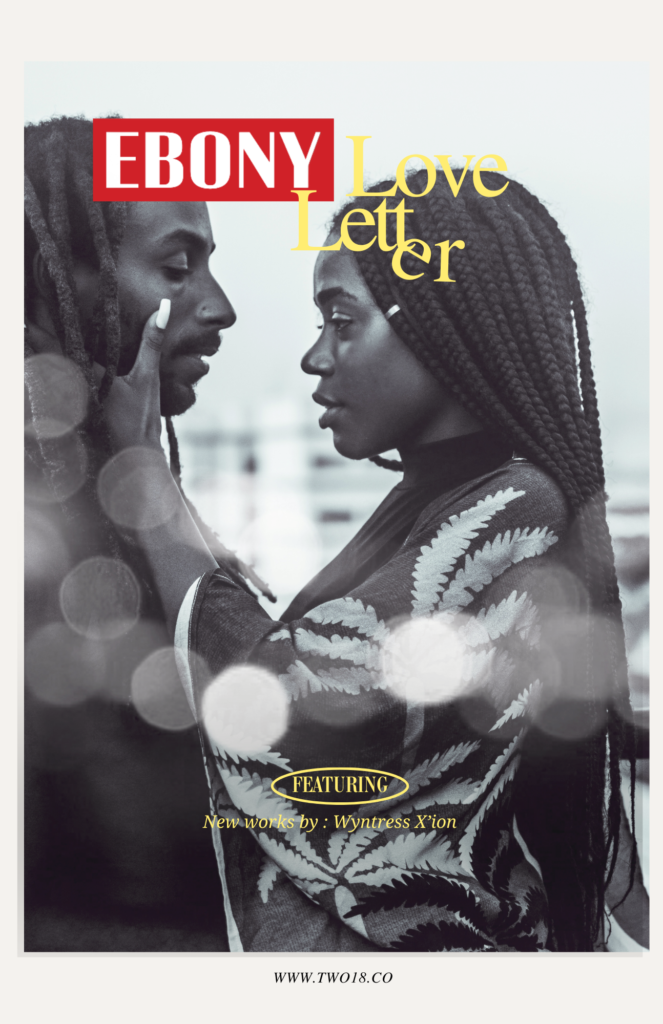




_md.jpg)
















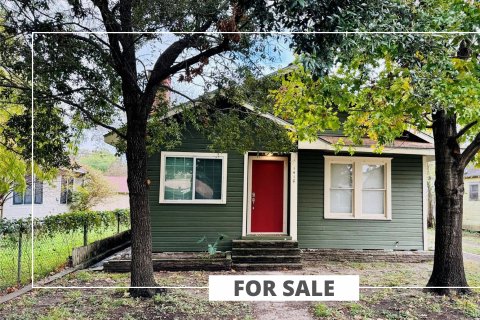

















_md.jpg)












_md.jpg)




_md.jpg)





_md.jpg)
_md.jpg)

_md.jpg)
